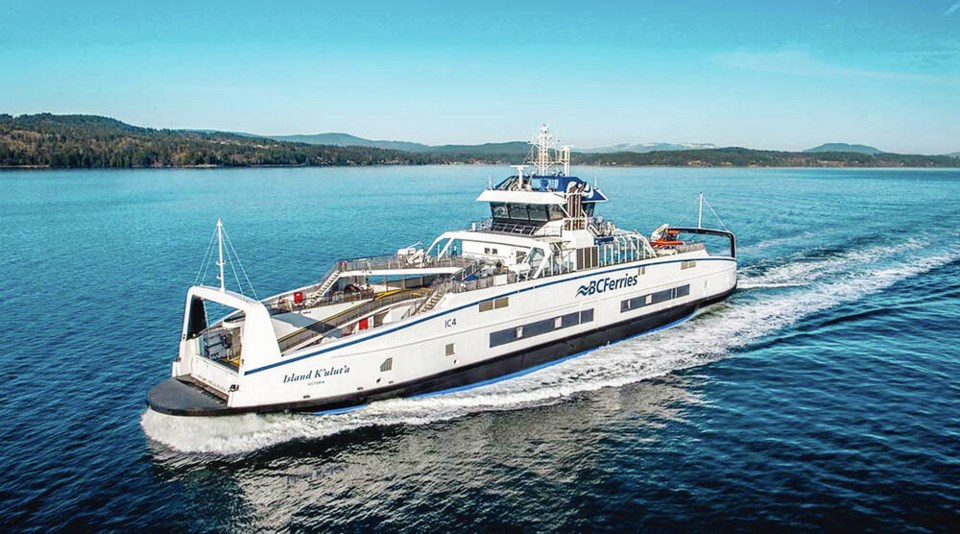B.C. Ferries is aiming to order four new battery-powered electric Island-class ferries to serve the Nanaimo Harbour-Gabriola Island and Campbell River-Quadra Island routes, which would free up existing ferries to meet surging demand on other smaller routes, it says.
If B.C. ferry commissioner Eva Hage approves the company’s plans, new electric vessels with rapid onshore charging systems are expected to be service in 2026 and 2027.
Charging systems would be located at Nanaimo Harbour, Gabriola Island, Campbell River and Quadra Island.
Details of the program are contained in an Oct. 10 letter from Jill Sharland, B.C. Ferries chief financial officer, to the commissioner.
Electrification would cut greenhouse-gas emissions, while relocating current ferries would reduce crowding and lineups, missed sailings and noise at terminals on smaller routes, the company said in its report.
Residents have complained of unsafe roads because of the high number of vehicles parked while waiting — sometimes for many hours — for space on a ferry.
B.C. Ferries is seeking approval to spend money earmarked for carbon reduction to embark on its long-planned electrification program. Before using those funds, it must receive approval from the commissioner, who decides on applications for major capital expenditures.
If the request is approved, B.C. Ferries would have a total of 10 Island-class ferries. The six in service now run on diesel. The four new battery-powered ferries would also carry diesel engines so they could operate on other routes.
Last month, B.C. Ferries cancelled a more ambitious electrification program, where it would electrify the existing Island-class ferries and install up to nine on-shore charging stations. That idea was axed after B.C. Ferries failed to convince the federal government to help with costs.
No cost estimates were revealed for the revised plan, but B.C. Ferries’ new report to the commissioner said there are three possible external funding sources to help pay for electrification, although it only mentioned funds from B.C. Hydro for some of the capital costs of electrical infrastructure upgrades.
Under the company’s redeployment plans, two existing Island-class ferries would be transferred to the Crofton-Vesuvius/Salt Spring Island run, replacing the Quinsam, a move B.C. Ferries estimates would bring in about $320,000 in added revenue per year.
Another Island-class ferry would be relocated to the Quadra Island-Cortes Island run, replacing the Tachek.
Currently, some people park in the ferry lineup the night before to catch the first ferry, the report said. With more capacity on the route, travel should become easier for customers, B.C. Ferries said.
The company predicts another $70,000 per year would come into the system on that route once an Island-class ferry goes into service on Cortes Island.
Among all routes in the ferry system, the run between Denman Island and Hornby Island has the lowest available capacity during peak summer season. The Quinitsa has been serving the route as a relief vessel and will continue to do so, the company said. A detailed review of the route is expected this fall.
Two current Island-class vessels would be introduced to the Swartz Bay-Fulford Harbour/ Salt Spring Island route. The Quinsam, now on that route, could be used for relief service.
Plans include using one Island-class vessel to fill in when needed, such as when other vessels are in for refit.
The public can comment until Nov. 10 on B.C. Ferries’ electrification program.
cjwilson@timescolonist.com



